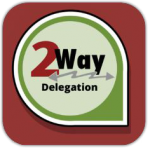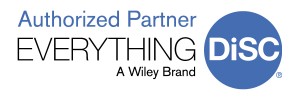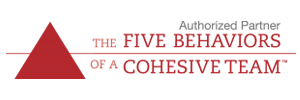Course Description
Stress is a normal part of everyday life. A person’s ability to understand and manage their stress has a direct correlation to effective performance in the workplace. In this course, participants will learn how stress works, recognize personal sources of stress, understand the effects of stress, develop coping strategies, and create an action plan to reduce stress and improve productivity.
Participants start the course by identifying both their current stress level and primary stressors on a banner; this banner will be referred to throughout the class. Participants will then engage in a brief discussion on the impact of this stress in both their work and personal lives. A three-step stress management process will then be introduced. These three steps are the foundation for the session; participants will work through each step and apply the concepts and learning to their own situations.
For the first step, Awareness, participants will work in small groups to define stress and examine their reactions to stress. As a large group, they will then participate in a discussion of good stress, bad stress, and the impacts of both. During this discussion, they will learn the science behind how stress works and identify both internal and external sources of stress.
Once participants have a general understanding of how stress works, the sources of stress, and the impacts of stress, they are then ready to transition to Step Two: Assessment. During this step, participants will take the StressMap® Assessment. The assessment is extremely powerful and comprehensive; this tool will help participants identify very specific sources and intensity levels of the stress they are currently experiencing. The tool is also an excellent source of targeted strategies for reducing areas of stress. Participants complete this step by working with a partner to discuss insights gained from the assessment.
During the third step, Action Planning, participants will work in groups to identify and discuss strategies for managing the areas of stress where they scored highest on the assessment. Finally, as a large group, they will further participate in activities to help them learn and apply the stress management techniques of acceptance, reframing, and humor.
The course switches focus after the first break. The focus becomes workplace stress: how to identify and reduce employee stress. Employee productivity, job satisfaction, engagement, innovation are impacted by stress levels. Each leader will identify each employee’s level of workplace stress. An action plan is then created to support each employee and the team in reducing stress levels.
Objectives
After completing this course, you will be able to:
- Apply a three-step process to manage your stress.
- Define stress.
- Discuss how stress works.
- Assess stress levels using the StressMap®.
- Discuss how short- and long-term mental health risks associated with prolonged stress.
- Identify signs of employee stress.
- Describe the impact of employee stress and how it impacts productivity, engagement and job satisfaction.
- Create an action plan of how to support employees will stress levels.
Duration
This course has a 4-hour agenda.
Class Size
This course is designed for up to 15 participants.
Course Outline
Below is the course outline with objectives and timing for a 4-hour agenda.
Objective and Topic | Timing | Elapsed Timing | |
| Welcome and Icebreaker · Activity – Current Stress Level | 10 min | 10 min | |
| Agenda and Objectives | 5 min | 15 min | |
| Objective: Apply a three-step process to manage your stress. | |||
| Three Steps for Managing Stress § Awareness § Assessment § Action Planning | 1 min | 16 min | |
| Objective: Define stress. | |||
| Step One: Awareness § Activity – Define Stress | 4 min | 20 min | |
| Good Stress and Bad Stress | 5 min | 25 min | |
| Objective: Discuss how stress works. § Discuss how short- and long-term mental health risks associated with prolonged stress. | |||
| How Stress Works § External Causes of Stressors § Internal Causes of Stressors | 10 min | 35 min | |
| Impact of Stress | 5 min | 40 min | |
| Objective: Assess stress levels using the StressMap®. | |||
| Step Two: Assessment § StressMap® | 60 min | 1 hr, 40 min | |
| Step Three: Action Planning | 10 min | 1 hr, 50 min | |
| Break | 10 min | 2 hr | |
| Objectives: § Identify signs of employee stress. § Describe the impact of employee stress and how it impacts productivity, engagement and job satisfaction. § Create an action plan of how to support employees will stress levels. | |||
| Discuss and chart signs of stress in employees | 20 min | 2 hr, 20 min | |
| For each signal of stress, identify the impact | 10 min | 2 hr, 30 min | |
| Identify supervisor behaviors that contribute to employee stress (specifically around setting stretch goals and supporting employee achievement) | 30 minutes | 3 hr | |
| Create an employee stress-level matrix | 30 min | 3 hr, 30 min | |
| Identify methods and practices to support employees experiencing stress | 20 min | 3 hour, 50 min | |
| Objective: Implement an action plan to reduce stress and workplace productivity. | |||
| Action Planning | 10 min | 4 hr | |


